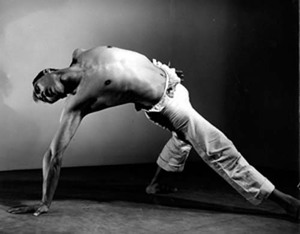Doris Batcheller Humphrey (October 17, 1895 â€" December 29, 1958) was a dancer and choreographer of the early twentieth century. Along with her contemporaries Martha Graham and Katherine Dunham, Humphrey was one of the second generation modern dance pioneers who followed their forerunners â€" including Isadora Duncan, Ruth St. Denis and Ted Shawn â€" in exploring the use of breath and developing techniques still taught today. As many of her works were annotated, Humphrey continues to be taught, studied and performed.
Early life

Humphrey was born in Oak Park, Illinois, but grew up in Chicago, Illinois. She was the daughter of Horace Buckingham Humphrey, a journalist and one-time hotel manager, and Julia Ellen Wells, who had trained as a concert pianist. She was a descendant of pilgrim William Brewster. In Chicago, with the encouragement of her mother, she studied with eminent ballet masters as well as with Mary Wood Hinman, who taught dance at her school, the Francis Parker School. While still at high school she undertook a concert tour of the western states as a dancer, with her mother as accompanist, in a group sponsored by the Santa Fe Railroad for its Workman’s Clubs.
Partly due to financial concerns Humphrey opened her own dance school, with her mother as manager and pianist, in 1913 at the age of 18. It was a great success, offering classic, gymnastic and ballroom dance for children and ballroom dance for young adults.
In 1917, at the instigation of Mary Wood Hinman, she moved to California and entered the Denishawn School of Dancing and Related Arts where she studied, performed, taught classes and learned choreography. Her creations from this era, Valse Caprice (Scarf Dance), Soaring, and Scherzo Waltz (Hoop Dance) are all still performed today. She remained involved for the next decade. Humphrey toured the Orient for two years followed by a successful career in American vaudeville theaters.
Dancing through the Great Depression
In 1928 she and fellow dancer Charles Weidman separated from the Denishawn School, finding superficialities in the Denishawn approach, and moved to New York City to become key figures in the modern dance movement. Her choreography explored the nuances of the human body's responses to gravity, embodied in her principle of "fall and recovery". Her choreography from these early years includes Water Study, Life of the Bee, Two Ecstatic Themes and The Shakers.
The Humphrey-Weidman Company was successful even in the Great Depression, touring America and developing new styles and new works based not on old tales but on current events and concerns. In the mid-1930s Humphrey created the New Dance Trilogy, a triptych comprising With My Red Fires, New Dance and the now-lost Theater Piece.
Humphrey retired from performing in 1945 due to arthritis. She then took up the position of artistic director for the José Limón Dance Company and continued to successfully choreograph works such as Day on Earth, Night Spell and Ruins and Visions.
One of her last pieces, Dawn in New York, showed the strengths she demonstrated throughout her career â€" her mastery of the intricacies of large groups and her emphasis on sculptural shapes. Humphrey was on the original faculties of both The Bennington School of the Dance (1934) and The Juilliard School (1951), both directed by Martha Hill.
Legacy

Shortly after her death in 1958, Humphrey's book, The Art of Making Dances, in which she shared her observations and theories on dance and composition, was posthumously published. In the introduction she observed that ballet had changed radically in the 20th century. "Suddenly the dance," she said, "the Sleeping Beauty, so long reclining in her dainty bed, had risen up with a devouring desire."
Humphrey was inducted into the National Museum of Dance's Mr. & Mrs. Cornelius Vanderbilt Whitney Hall of Fame in 1987.
A street in her home town of Oak Park is named for her paternal grandfather, the Reverend Simon James Humphrey.
See also

- Women in dance
Notes

References
- Dunning, Jennifer (1989-03-11). "Review/Dance; Recalling the Spirit of Doris Humphrey". The New York Times.Â
External links

- Doris Humphrey official website
- Doris Humphrey Foundation for Dance at Goucher College
- Archive film of Doris Humphrey's Lament for Ignacio Sánchez MejÃas performed by Jose Limon in 1946 at Jacob's Pillow
